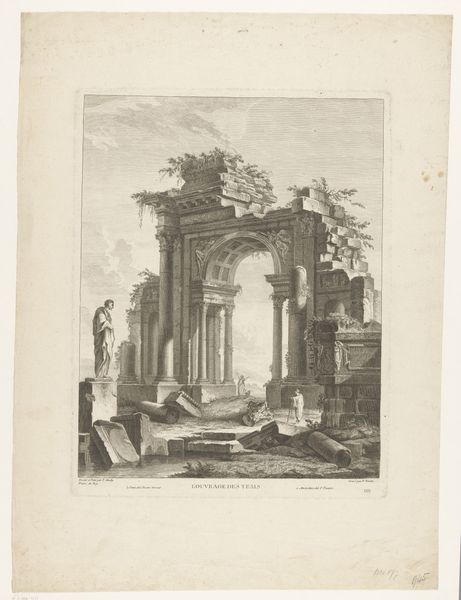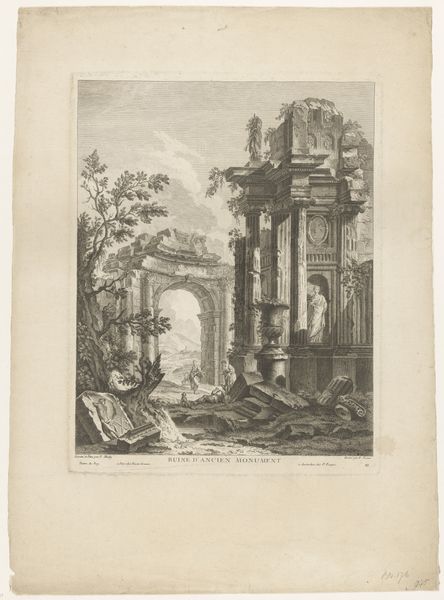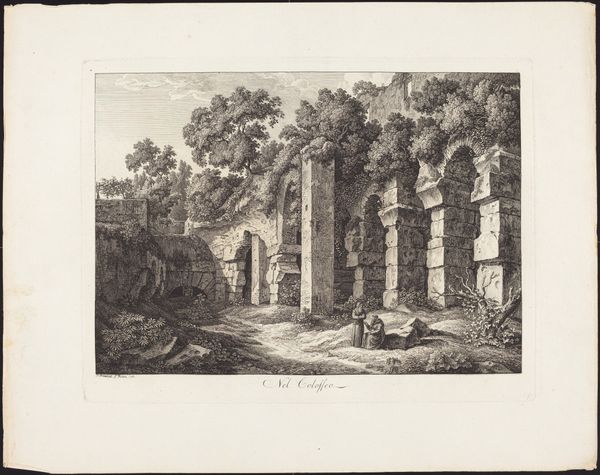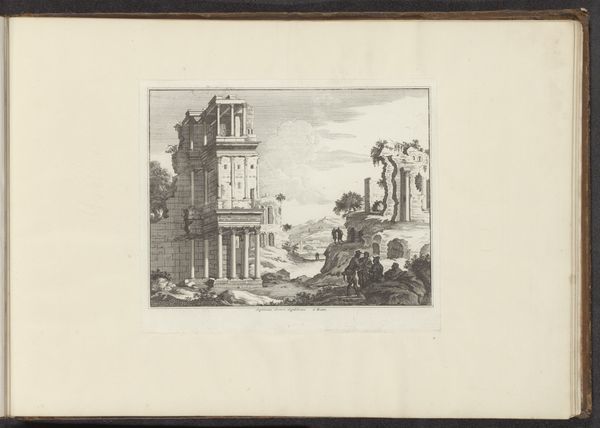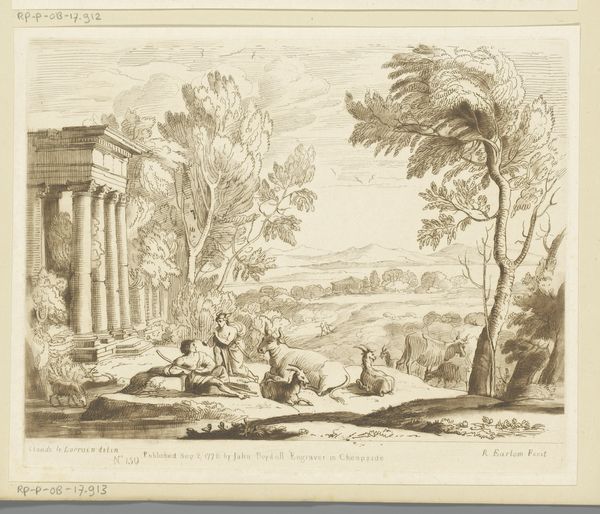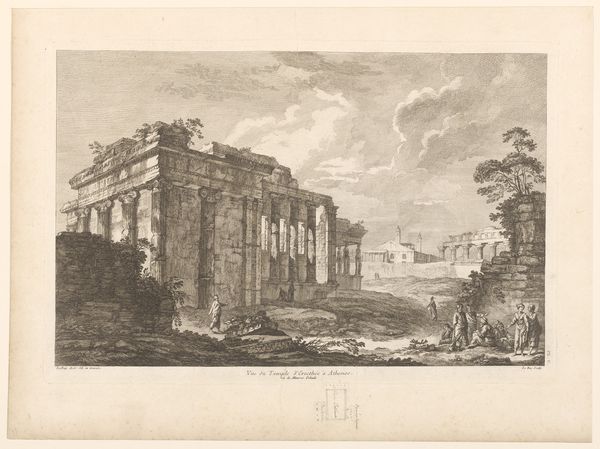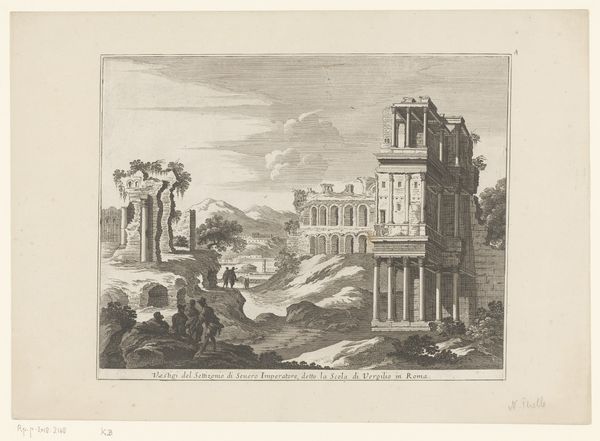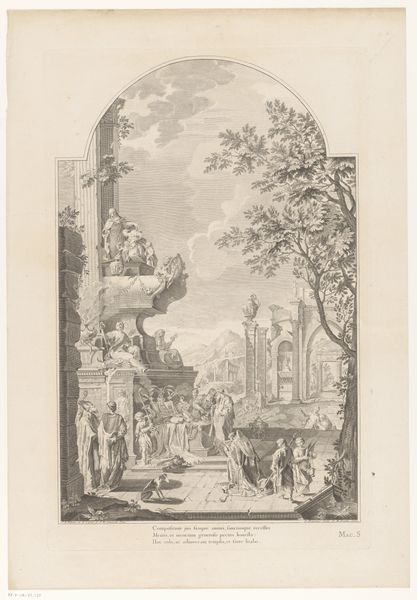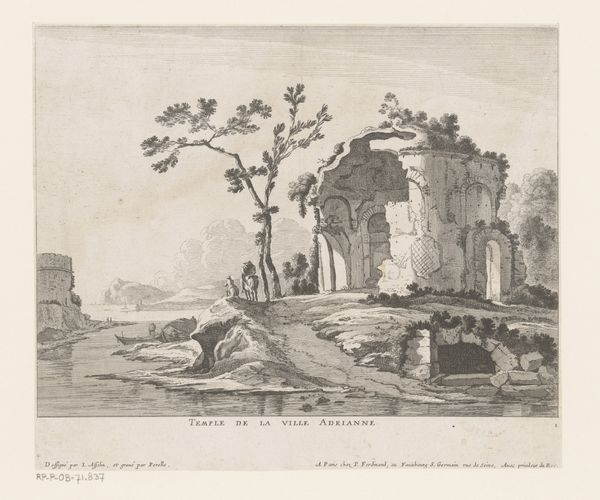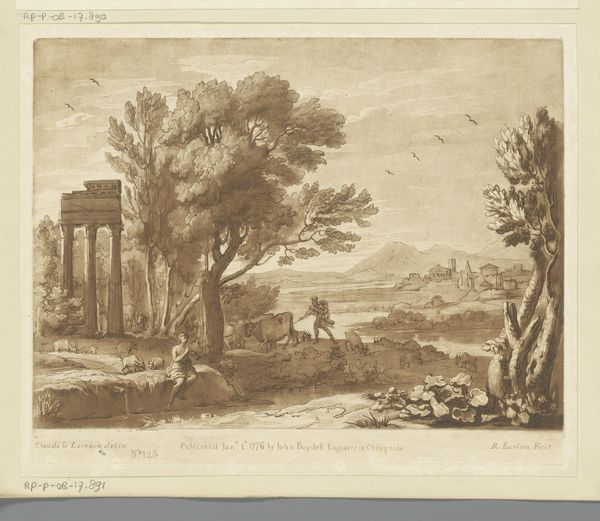
print, engraving, architecture
#
neoclacissism
# print
#
landscape
#
ancient-mediterranean
#
engraving
#
architecture
Dimensions: height 267 mm, width 180 mm, height 414 mm, width 289 mm
Copyright: Rijks Museum: Open Domain
Curator: This engraving from 1787, entitled "Door vegetatie overwoekerde Egyptische architectuur," rendered by Cesare Massimiliano Gini, presents a study in ruins, an interior overrun by vegetation. The sharp lines of the engraving medium create a powerful, graphic effect. Editor: I find it melancholy, even haunting. The light seems trapped, somehow, filtering weakly through the dilapidated stone. Nature, both assertive and patient, seems to be reclaiming what was once ordered, pristine space. Curator: Indeed. Gini employs the visual language of Neoclassicism, adhering to principles of order, symmetry, and reason, yet he subverts them by portraying decay and the triumph of the natural world over human endeavor. Note the architectural forms, they imply a knowledge of antiquity informed by Enlightenment ideals, but it is ancient Egypt filtered through a European lens. Editor: There’s something poignant in the details—the fallen stones, the creeping plants, the tiny figures seemingly lost in the immensity of it all. They accentuate the scale and the overall impression of futility. Is this Gini’s statement on the ephemerality of human grandeur, perhaps? Curator: Potentially. One could argue that the piece critiques hubris and the futility of erecting overly ambitious monuments. The engraving technique is significant as well. The sharp lines, contrasting light and shadow, speak to the prevailing aesthetic of the era—a celebration of rationality even as the subject matter questions it. Note how the architectonic structure draws our eyes into the middle of the art work, and, following the central composition leads the viewer from dark into light... the figures seem like mere specters as the image evolves through visual hierarchy. Editor: I see what you mean about the Enlightenment tension there. I guess what moves me most is this palpable sense of time itself, weathering away stone and aspiration alike. Curator: I agree, there's a profound interplay between the temporal and the spatial elements within this work. Thank you for lending me your vision. Editor: Thank you. It really shifts how I view the piece... makes it so much richer.
Comments
No comments
Be the first to comment and join the conversation on the ultimate creative platform.
